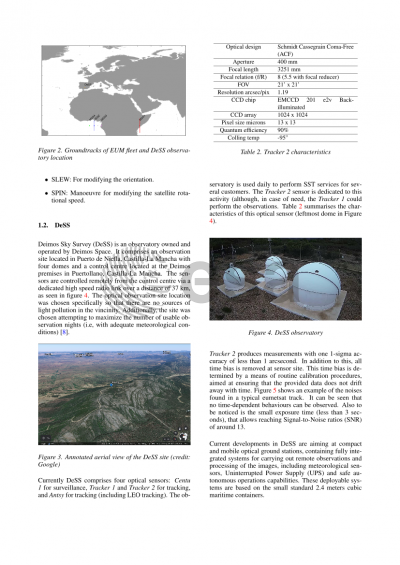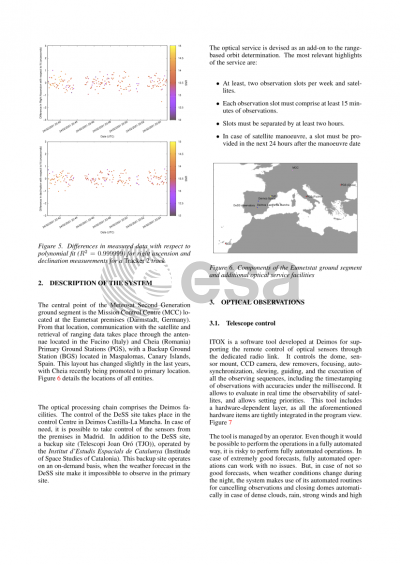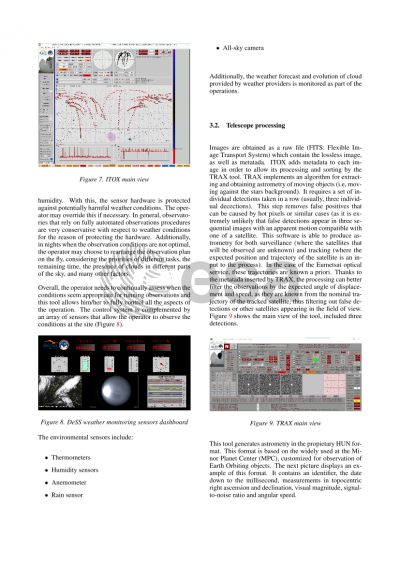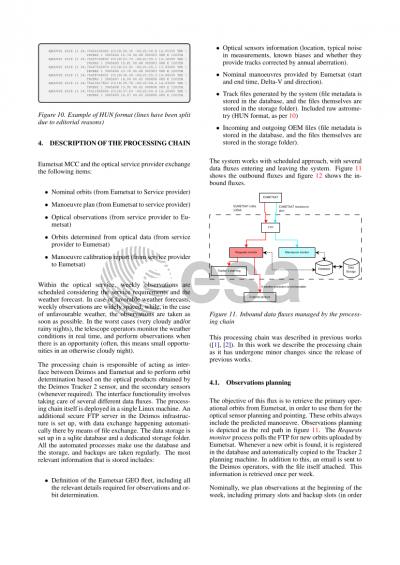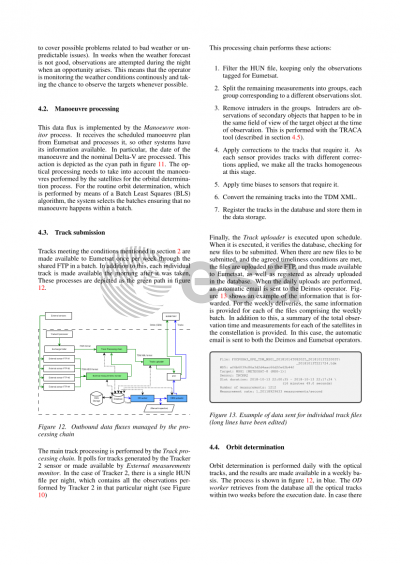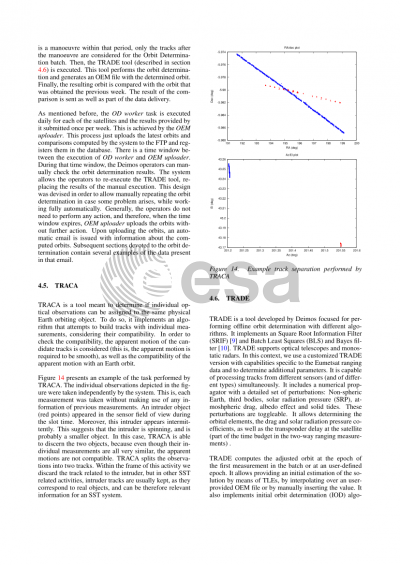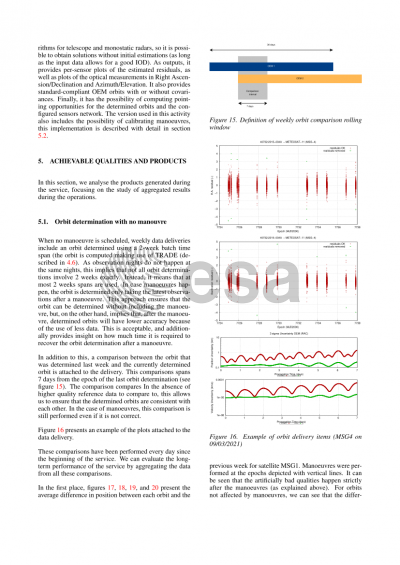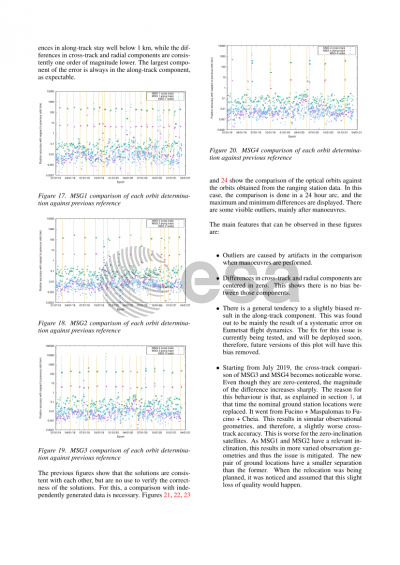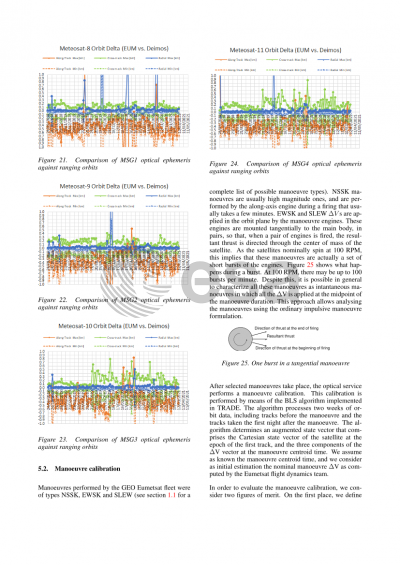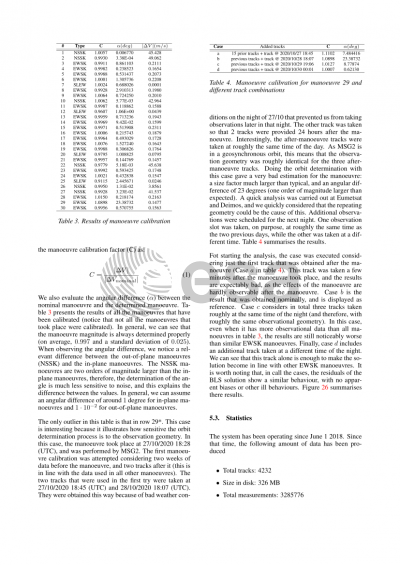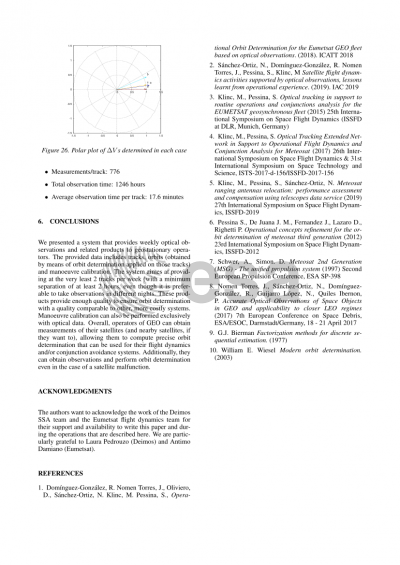Document details
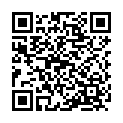
Abstract
Since June 2018 EUMETSAT has incorporated SST like optical observations into the operational orbit determination process for the four geosynchronous Meteosat satellites, with the objective of assessing the suitability of optical data to support the operational activities, and evaluating the accuracy of routine orbit determination and manoeuvres calibration using mixed data from ranging stations and telescopes. Up to now, the flight dynamic activities were based on ranging data from a network of stations, with alternate tracking from two stations per satellite.
The optical measurements are provided by the Deimos Sky Survey (DeSS) telescopes, using additional sensors as a backup in case of adverse weather conditions or technical issues. The processing of the measurement data is performed by two separate teams at Eumetsat and Deimos.
Each satellite is observed at least twice per week, in routine mode, plus additional observations when required, for manoeuvre calibration purposes. The orbit determination based on those observations is automatically performed weekly by means of a Batch Least Squares approach with a two-week rolling window. In absence of manoeuvres, this allows determining the solar radiation pressure coefficient while maintaining consistency with the previously computed orbits. When a manoeuvre is scheduled, optical observations are taken as soon as possible after the manoeuvre itself. In this case, the paper shows that the orbit determination with optical information provides results comparable with the nominal range-only orbits, with accuracy gain in case of fusion of the different measurements. The paper describes some situations to be avoided where the manoeuvre calibration offers worse results, like the tracks collected with a time gap of about 24 hours.
This paper describes the processing chain put in place at Deimos for scheduling and performing the observations, and for the processing of measurement data, and it summarizes the findings after more than one year of service. The paper presents an evaluation of orbital quality and capability to estimate manoeuvres executed by the satellites, and identifies the benefits for satellite operators when using this novel approach for satellite operations based on this kind of observations.
Preview


